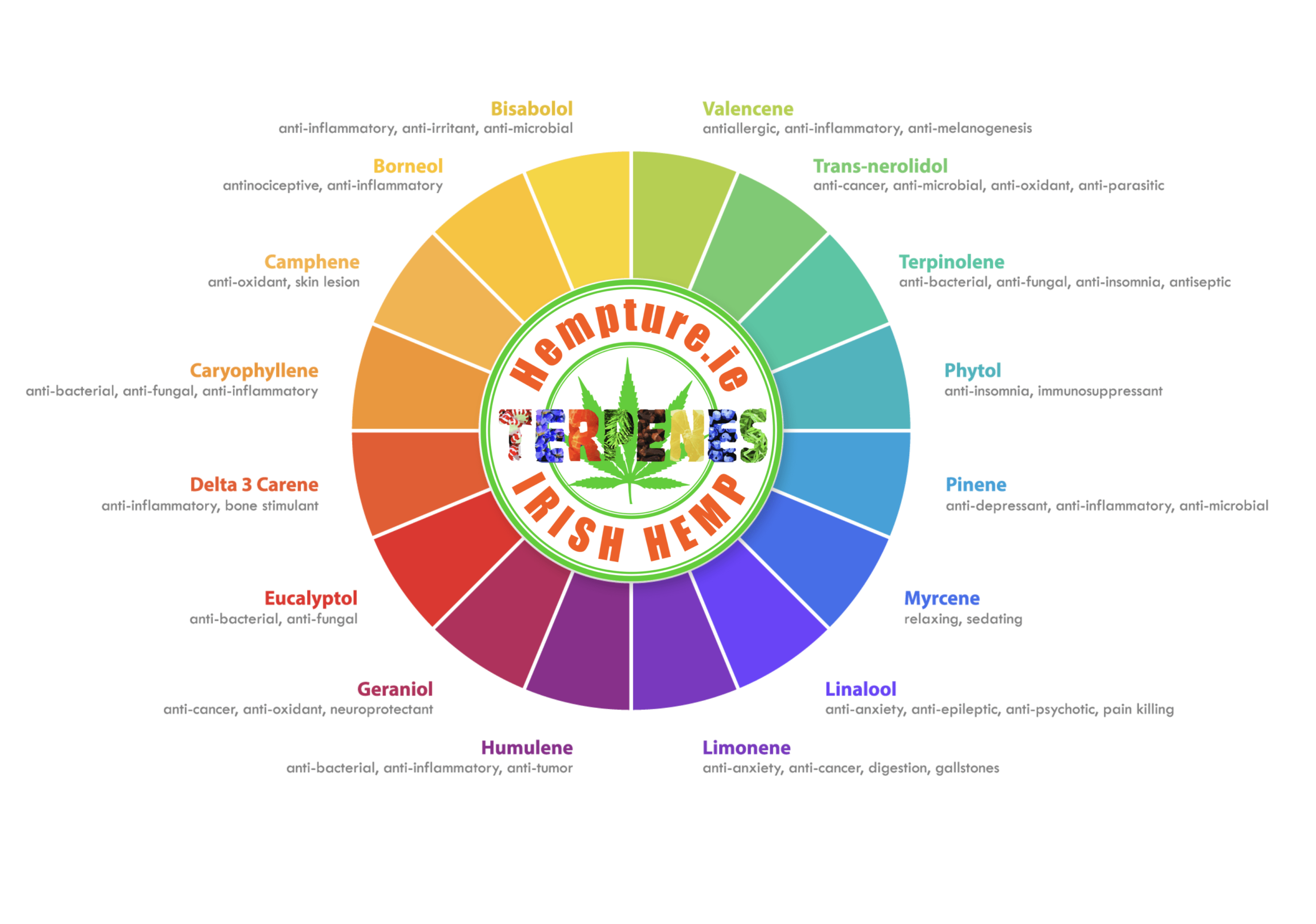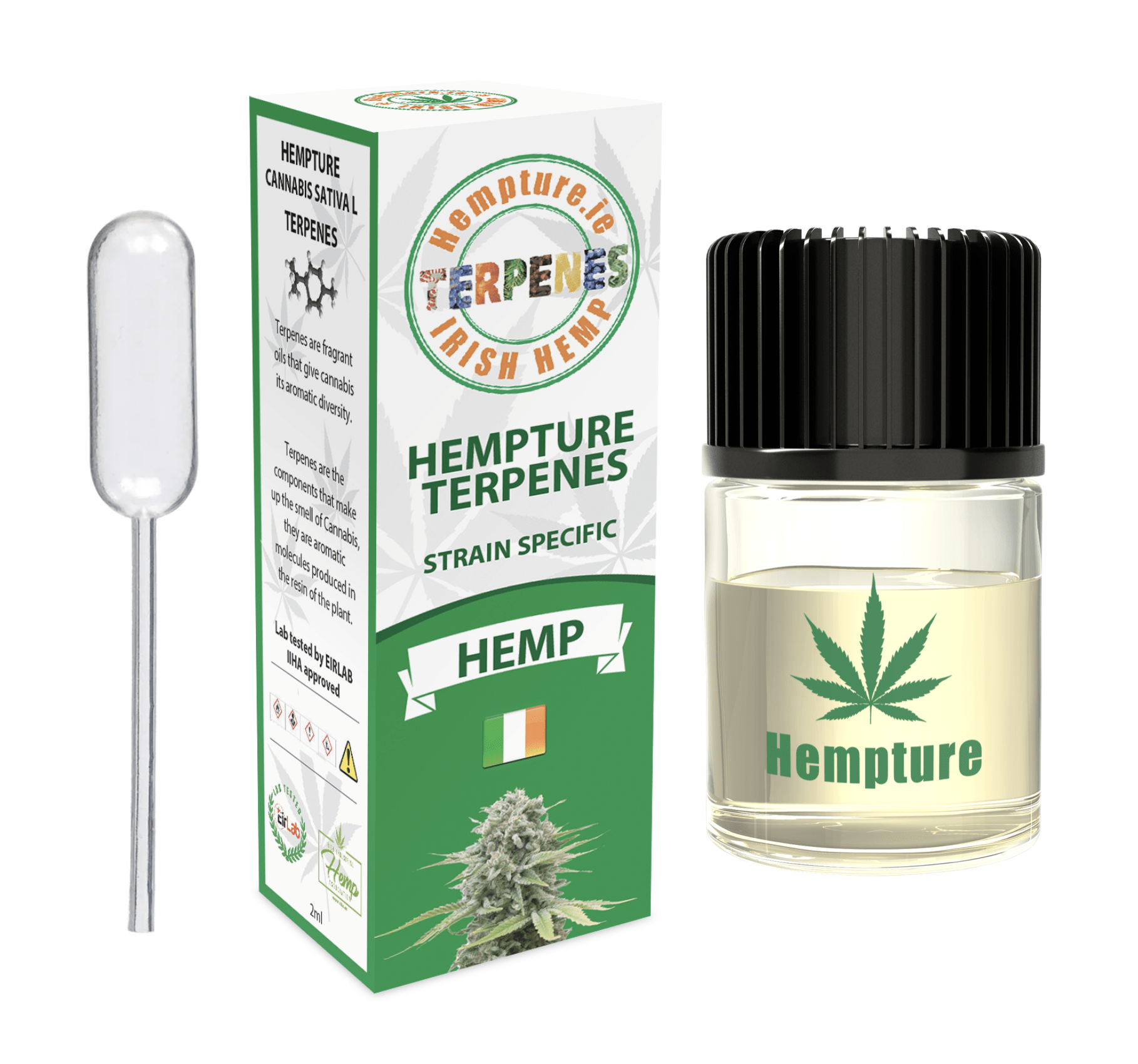WHAT ARE CANNABIS TERPENES?
Download: Cannabis Terpenes – The Ultimate Guide (PDF)
TERPENES MIXING GUIDE (PDF)
Do you remember that refreshing, sharp piney smell during a forest walk in the green hills of Ireland?
Or maybe that zesty, sweet citrus scent that invades your nostrils each time you peel an orange? If you’re familiar with these fragrant aromas, then you might have registered the smell of different terpenes in your memory without even knowing it.
We find terpenes behind the hints of wild jasmine or lavender in the mild breeze, like any other single aroma in nature. These are the building blocks of essential oils in plants, developed to repel pests, protect themselves from microorganisms, attract pollinators, and promote the plant’s general well-being. Currently, there are more than 20,000 terpenes on the planet, hidden in berries, vanilla, rosemary, citrus, pepper, and other plants, like cannabis.
Here, you will learn more about primary, secondary, and other common terpenes identified in cannabis, along with descriptions of their rich aroma, flavour, and associated effects. Additionally, we have included different strains and their boiling points, so you can set your vape pen at the right temperature to unleash its remarkable properties.
Have you ever wondered why some strains smell like blueberries while others smell like cheese or chocolate? Well, the answer is terpenes. On the surface of the leaves and stems, inside specialised hairs called trichomes, cannabis plants produce these aromatic oil compounds, the fundamental base of every distinctive scent and eclectic flavour in every variety.
Besides giving cannabis its taste and aroma, terpenoids have a host of beneficial therapeutic effects. Terpenes dance with other cannabinoids and cannabis compounds, working in conjunction in a chemical event known as “The Entourage Effect.” Through this process, these organic components create a holistic synergy that plays a significant role in the way cannabis interacts with our bodies, providing extra benefits that range from physical to mental improvements.
Buy Cannabis Terpenes in Ireland
Buy isolated Cannabis Terpenes in Ireland
Myrcene
Meet the leading cannabis-derived terpene of all. Not only is myrcene the most abundant terpene in cannabis (65%), but it also plays a significant role in deciding whether a strain is going to be an upbeat Sativa or a relaxing Indica. When a variety contains more than 0.5% of this terpene, it’s more sedative. Besides cannabis, hops, mangoes, bay leaves, thyme, and lemongrass contain high levels of myrcene.
Aroma: Pungent, dank earthy flavour, with musky notes. Moreover, it has a tropical, fruity, red grape-like aroma with citrus hints.
Effects: Sedative and muscle relaxant. Myrcene aids depression and induces sleep. It also has anti-carcinogenic and antioxidant properties and helps reduce inflammation and chronic pain, which is why it’s usually recommended as a supplement during cancer treatments.
Boiling Points: 167°C.
CAS Number: 123-35-3
Cannabis Strains: Most Cannabis flowers burst in myrcene. Pineapple Haze, Hawaiian Haze, Cat’s Meow, and Hot Blonde are excellent examples that you can try. If you seek rich-THC strains packed with ample amounts of this relaxing terpene, Skunk XL, White Widow, and Special Kush should be the chosen ones.
Buy Myrcene Terpenes in Ireland

Alpha-Pinene & Beta-Pinene
Remember that fresh piney scent that we were talking about before? Yes, the blame is on one of the members of the pinene family. There are two structural isomers of pinene found in nature:α-Pinene and β-Pinene. As the name suggests, both bicyclic monoterpenes are essential constituents of pine resin, but they’re pretty different in terms of scent.
Aroma:
Alpha-Pinene: Crisp, zest, fresh pine, earthy, spicy
Beta-Pinene: Herbal, woody-green pine-like smell. It also occurs naturally in rosemary, parsley, dill, basil, and rose.
Effects: Pinene is anti-inflammatory, antibacterial, reduces memory loss related to THC, promotes alertness, and acts as a bronchodilator (opens the respiratory passageways). There is also evidence that the presence of pinene amplifies the pain treatment potency while easing inflammation, depression, anxiety, addiction, epilepsy, cancer, asthma, arthritis, Crohn’s disease, or even fungal and bacterial infections.
Boiling Point: 155°C
CAS Number:
a-Pinene 7785-26-4
b-Pinene 99 18172-67-3
Cannabis Strains: Different strains like Kona Gold, Blue Dream, Jack Herer, Strawberry Cough, Island Sweet Skunk, Dutch Treat, and Romulan contain pinene.

Beta-caryophyllene
Black pepper, cinnamon, oregano, and cloves; Beta-caryophyllene is the one that brings the characteristic spiciness to your life. If you have an excellent strain with some peppery notes, it’s likely thanks to this terpene.
Aroma: Citrus, Spice, Pepper, Earthy
Effects: This terpene is known for being the only one with the unique ability to bind directly to CB-2 receptors in the Endocannabinoid system. Thanks to this amazing feature, it regulates pain sensations effectively and eases inflammatory processes, making it useful to treat osteoarthritis. Moreover, its gastroprotective activity promotes healthy digestion and aids colitis. Likewise, its antiseptic, antibacterial, anti proliferative, antibiotic, and anti-fungal properties may enhance wound healing. Due to caryophyllene’s anti-anxiety and antioxidant qualities, it’s also used to help with diabetes, liver fibrosis, cerebral ischemia, anxiety, depression, and Alzheimer-like diseases.
Boiling Point: 245.3°C.
CAS Number: 87-44-5
Cannabis Strains: Girl Scout Cookies, Gorilla Glue #4, OG Kush, Super Silver Haze, Skywalker, and Rock Star are excellent recreational, high caryophyllene options. If you prefer to hang lucid and keep the clarity, savor our Bubba Kush and Silver Haze and enjoy their peppery notes.
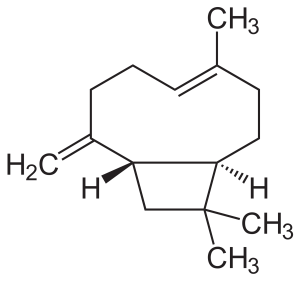
Humulene
Beers and cannabis have one thing in common, and that’s α-Humulene. Also known as α- caryophyllene, this terpene is the monocyclic sesquiterpene responsible for giving that hoppy type of smell to strains. You can find it naturally occurring in hops, ginseng, sage, clove, basil, and cannabis, predominantly in energising and uplifting varieties.
Aroma: Woody, Hoppy, Spicy, Herbal, Earthy.
Effects: Anti-inflammatory, pain-relieving properties, anti-tumour, anti-bacterial, and appetite suppressant.
Boiling Points: 106 to 107°C
CAS Number: 6753-98-6
Cannabis Strains: Bring the calm and feel the warm hug of Humulene’s woody aroma by lighting up a Sour Special Sauce Preroll. White Widow, Headband, Girl Scout Cookies, Sour Diesel, Pink Kush, Legendary OG, and Skywalker OG.
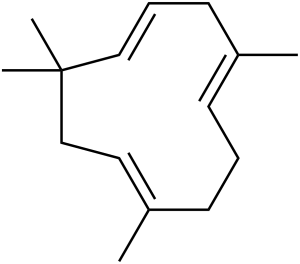
Limonene
This terpene squeezes all your sour problems with its happy, citrusy aroma, awakening vibe, and bright energy. It’s naturally found in citrus fruit rinds, rosemary, juniper, peppermint and is frequently added to medicine, food and perfume, and citrus house cleaning solutions. Limonene is the second-most abundant terpene in all cannabis strains.
Aroma: It has a fresh lemon and orange rind aroma with subtle hints of spice. It has a solid citrus odour and bitter taste.
Effects: Limonene is an excellent mood-enhancer with anti-anxiety, anti-depressive, and stress-relief effects. Its uplifting effects make high-limonene strains excellent choices for daytime productivity. Along with its anti-fungal, anti-bacterial, anti-carcinogenic properties, Limonene also aids weight loss and bronchitis. In addition, it treats gastrointestinal disorders like acid reflux or heartburn and helps with gallstone eradication.
Boiling Point: 176 °C.
CAS Number: 138-86-3
Cannabis Strains: Strains that have “lemon” or “sour” in their name, like Sour G CBG, Sour Space Candy, and Super Lemon Haze, are usually rich in Limonene. Other high-limonene strains are Lifter, Hot Blonde, O.G. Kush, Durban Poison, Jack Herer, Wedding Cake, Do-Si- Do, and Jack the Ripper.

Linalool
Lavender oil has been used and cherished for centuries for its unmistakable aroma and myriad benefits. Studies suggest it may help relieve stress, chronic pain, high blood pressure, and asthma. Most of these properties are due to linalool, which is its major terpene.
So, if you have ever had a lavender lotion, soap, or perhaps cleaning solution, then you have been in touch with this lovely terpene without even knowing it. Besides Lavender, Linalool it’s also found in mint, cinnamon, fungi, citrus, laurels, birch, coriander, and rosewood.
Aroma: Floral, lavender, citrus, candy, with hints of fresh spice.
Effects: A sleep aid agent with sedative, relaxing, and calming effects. It has aesthetic, anti-anxiety, anti-depressant, and anti-psychotic properties. Linalool lifts your mood, strengthens the immune system, eases stress, relieves reflux, pain, and inflammation, while reduces muscle spasms and seizures. Not only does it have anti-fungal and antibacterial qualities but it also can be used as an anti-parasitic agent, making it one of the most complete compounds of this cannabis terpenes list.
Boiling Point: 198°C.
CAS Number: 78-70-6
Cannabis Strains: To have a bite of linalool’s happy calm, check out cannabis strains like
Lavender, Master Kush, Pink Kush, Amnesia Haze, OG Shark, and LA Confidential.

Terpinolene
Terpinolene rarely leads a strain’s terpene profile but undoubtedly plays a crucial role in defining its taste and smell. In terms of aroma, Terpinolene has it all. This versatile terpene carries various fragrances, from an inviting fresh pine herbal scent to an enticing floral bouquet with citrusy notes. It’s the primary terpene found in oregano, marjoram, cumin, nutmeg, apples, lilac, some citrus rinds, and conifers.
Aroma: Floral, pinewood, with herbal subtle notes and lime.
Effects: This terpene has antioxidant, immune-modulating, and anti-biologic properties, such as anti-tumour, antibacterial, and anti-fungal qualities. Terpinolene is also a sedative agent used for the treatment of insomnia. Moreover, scientists have found that this terpene may have a positive effect on cardiovascular diseases.
Boiling Point: 186°C
CAS Number: 586-62-9
Cannabis Strains: Our CBD-rich Super Sour Space Candy,Sour Space Candy, and Pineapple Haze are packed with high amounts of this multifaceted terpene. Terpinolene is also present at elevated levels in THC strains like the legendary Jack Herer strain, Ghost Train Haze, Chernobyl, Dutch Treat, XJ-13, and Golden Pineapple.

Terpineol
Terpineol is present in more than 150 plants and natural oils like lime blossoms, eucalyptus sap, sage, pine trees, and lilacs. Not to be confused with terpinolene, it’s commonly used in the industry for perfumes, cosmetics, lotions, soaps, and candles due to its lovely, pleasant scent. Its most common form is alpha-terpineol (α-terpineol).
Aroma: Floral, lilac-like, apple blossom scent, with citrus nuances and piney hints. Some users describe that terpineol tastes like anise and mint.
Effects: Terpineol exhibits a wide range of therapeutic qualities. Among the most significant properties of this primary terpene are its anti-inflammatory and analgesic effects that ease painful acute or chronic diseases. Moreover, its antioxidant and antitumor properties make terpineol a helpful agent that can help fight certain types of cancer, including breast, lung, prostate, ovarian cancer, and chronic myeloid leukaemia. Besides these qualities, it possesses antimicrobial activity, induces vasodilation, lowers arterial pressure, and acts as a sedative and relaxing agent. Nevertheless, terpineol is irritating to the eyes and mucous membranes. It is recommended to avoid contact with the skin and eyes and ingestion because it may produce hemorrhagic gastritis.
Boiling Point: 219°C.
CAS Number: 98-55-5
Cannabis Strains: Multiple strains like Purple Gas Hemp, Girl Scout Cookies, Jack Herer, Peach Mint Kush, and the Haze Berry Strain often test high in terpineol.
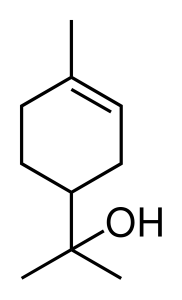
Octanol
Octanol is one of the primary terpenes found in frankincense, the aromatic resin used in incense and perfumes obtained from trees of the genus Boswellia in the family Burseraceae. The simplest and most influential member of the Octanol family is 1-Octanol.
Aroma: Oily, sweet, slightly herbaceous taste, similar to bitter almond, burnt matches, with floral undertones. 1-Octanol has a sharp fatty-citrus odor, reminiscent of fresh orange-rose fragrance.
Effects: Octanol has potent anti-inflammatory and analgesic effects. When used in conjunction with pinene and linalool, it has a powerful anti-inflammatory entourage effect. Research has shown that Octanol-1 may help control essential tremors (ET) and other types of involuntary neurological tremors characterised by involuntary rhythmic contractions and relaxation of certain muscle groups.
Boiling Point: 195°C
CAS Number: 111-87-5
Cannabis Strains: Currently, there’s no information available about octanol strains on the cannabis market.
![]()
Isopulegol
Do you enjoy the refreshing minty side of plants like eucalyptus, parsley, lemongrass, or lemon balm? If yes, then you might want to thank Isopulegol. Within the complexity and appeal of the plants, scientists found this secondary terpene, contributing to its subtle minty scent. Due to its unique cooling property, Isopulegol has earned the leading role as an additive in cosmetics, soaps, and other personal care products.
Aroma: Fresh, mint, medicinal, and herbal.
Effects: As menthol’s chemical precursor, Isopulegol is an effective treatment for headaches. It possesses anti-inflammatory and antioxidant effects, along with gastroprotective properties and highly potent antiviral activity. In addition, Isopulegol has proved to be an anxiolytic and a good anticonvulsant in animals.
Boiling Point: 212°C
CAS Number: 89-79-2
Cannabis Strains: If you are looking forward to trying Isopulegol’s tingly feeling in your nose, strains like Kosher Tangie, Headband, or OG Kush are the ones to purchase.
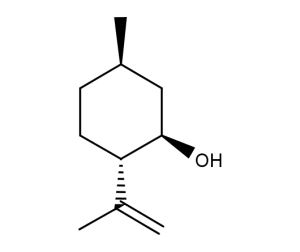
Cedrene
Adding an appealing dimension to the scent profile of cannabis comes Cedrene. Even though this secondary terpene is found at low levels in cannabis, it emits a warm, solid odor with a fresh scent profile. Cedrene is also present in essential oils derived from cedar, juniper, and cypress wood. It is classified as a sesquiterpene, meaning that its chemical structure is less volatile than other terpenes.
Aroma: Fresh, woody, and sweet scent.
Effects: Cedrene boasts impressive anti-inflammatory and analgesic effects while acting as a neuroprotective agent. Moreover, diverse cultures have valued cedarwood oil for its curative applications. Its astringent, antiseptic, antibacterial, antimicrobial, and anti-fungal properties have been helpful to disinfect wounds and heal acne. Moreover, Cedrene has also been associated with anticancer activity, especially when combined with cedrol, which can help to kill liver, lung, and oral cancer cells.
Boiling Points: 261–262°C
CAS Number: 469-61-4
Cannabis Strains: Cultivars like Jet Fuel and Skyrunner have more discernible Cedrene notes. Other cannabis strains high in Cedrene are Banana Split, Dank Rainbow from Boaz, Primal Punch from Boaz, and Planet of The Grapes.
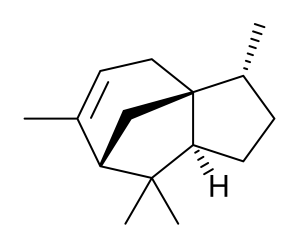
Camphene
Who doesn’t love that damp woodland smell? If you’re into woody cannabis strains with subtle pine hints, this terpene is for you. Used in the 19th century as fuel for lamps,Camphene is the primary component of camphor tree oil. Besides being found in camphor, this bicyclic organic compound is present in citronella, ginger, lavender, neroli fragrance, and valerian.
Aroma: Like Myrcene, Camphene is known for its earthy scent enriched with citrus and minty nuances. Its earthy aroma is complemented by musky herbal, woodsy-like undertones that are reminiscent of fir needles.
Effects: This terpene possesses anti-inflammatory, antibiotic, analgesic, and antioxidant properties, especially when mixed with vitamin C. Camphene has a positive impact on cardiovascular health, lowering cholesterol and triglycerides while maintaining healthy respiratory/bronchial passages. Finally, it has a healing effect on skin conditions like eczema, psoriasis, and athlete’s foot. For this reason, it’s widely used in conventional medicine as a topical.
Boiling Point: 159°C
CAS Number: 79-92-5
Cannabis Strains: ACDC, Mendocino Purps, Strawberry Banana, Banana Kush, Ghost OG, and OG Kush are great camphene strains.

Geranyl Acetate
This terpene is a naturally occurring component in more than sixty essential oils like citronella, sassafras, lemongrass, geranium, and coriander. The cosmetic industry uses this aromatic oil in various toiletries and daily-use products due to its enticing fragrance.
Aroma: Floral aroma with fruity-forward notes, reminiscent of summer fruit and roses. This terpene is prevalent due to its pear-like, banana, apple, and peach notes. Moreover, Geranyl Acetate can evoke comforting woody-like scents with subtle herbaceous notes.
Effects: Like other terpenes, Geranyl Acetate directly interacts with our pain receptors, easing pain and inflammation. This wonderful monoterpene has practical antimicrobial effects in fighting some types of bacteria and chronic fungal infections, too. Geranyl Acetate acts synergistically with other anti-fungal medications, making them more effective in fighting fungi such as Candida Albicans. On the other hand, it helps to reduce stress and depression while promoting relaxation. Its lipophilic property generates a series of antitumor effects that can effectively treat certain specific types of cancer.
Boiling Point: 245°C
CAS Number: 105-87-3
Cannabis Strains: Enjoy the soft floral and fruity scent of Geranyl Acetate in strains like Hawaiian Haze, Sour Space Candy, Suver Haze, Cherry Wine, Space Invader, Elektra, OG Kush, and Clementine.

Camphor
If your strain has a solid minty aroma with spicy, woody notes, then its shiny trichomes may be exuding Camphor. This secondary terpene enriches the complexity of every cannabis variety where it is present. It’s distilled from the Camphor Laurel Tree, though it is also found in spiced fruit, vegetables, and herbs such as rosemary, raspberry, apricot, and ginger.
Aroma: Herbal and spicy, framed by minty notes. Earthy and woody undertones, with a reminiscent naphthalene aroma.
Effects: Like other terpenes with a strong menthol-like aroma, Camphor improves respiratory function, relieves breathing congestion, and induces an expectorant action when inhaled. Traditional Chinese healers use it to alleviate muscle aches because of its anti- inflammatory, analgesic, and sedative effects.
Its refreshing fragrance provides stress relief and reduces anxiety, which is a potent property that enriches the effects of CBD in hemp strains. Likewise, its uplifting energy stimulates metabolism, boosting good digestion and circulation. Moreover, it has significant antimicrobial properties. Camphor oil can be used as a topical remedy to prevent and treat skin infections. It is also an effective insect repellent. Finally, but not less important, this monoterpene improves libido by acting on the part of your brain responsible for sexual desire.
Boiling Point: 209°C
CAS Number: 76-22-2
Cannabis Strains: If you’re looking for strains with a touch of Camphor, we
recommend Golden Haze, K13-Haze, and Amnesia Haze.
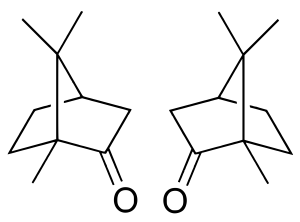
Pulegone
Pulegone provides the sweetness and cooling sensation of mint for each plant and product in which it is present. Although it is a secondary terpene, its dominant qualities enrich the flavor and aroma profiles of high-pulegone cannabis strains.
Aroma: Pulegone has a pleasant odor similar to pennyroyal, peppermint, and camphor.
Effects: Pulgone has anti-inflammatory and analgesic properties that make it ideal for treating chronic pain diseases like arthritis. It promotes muscle relaxation, stress, and anxiety relief. Like Camphor and other minty terpenes, Pulegone dilates the respiratory tract, unplugs your sinuses, and offers an expectorant effect, making it an excellent remedy to treat common colds and coughs. Moreover, this secondary terpene prevents damage to the cells by free radicals due to its antioxidant effects. In this way, it inhibits the progression of cancer.
Boiling Point: 224°C
CAS Number: 89-82-7
Cannabis Strains: Enjoy the tingly minty scent of this naturally occurring organic compound with two valuable members of the Kush legacy, the legendary OG Kush, and the Indica- Goddess Pink Kush.
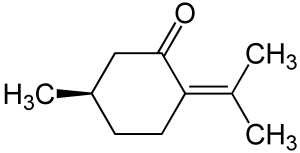
Alpha Phellandrene
Interestingly, Phellandrene was previously confused with Pinene and Limonene back in the early 1900s. Before their discovery, the phellandrenes were often misidentified with these primary terpenes due to their similarities. Scientists realised that this terpene represented two distinct isomeric compounds instead of one only after the compounds were tested in eucalyptus oil. Since then, we have used it in holistic medicine thanks to the variety of therapeutic properties it presents.
Although most prominent in eucalyptus, Phellandrene also exists in the essential oils of various plants like mint, dill, black pepper, cinnamon, parsley, pine, lavender, water fennel, and ginger grass.
Aroma: Minty, peppery, woody, with subtle citrus hints.
Effects: Phellandrene has been a staple in holistic Eastern medicine for its anti-fungal and antibacterial properties for ages. Many think it is a great energy booster, pain-reliever, and mood lifter with anti-inflammatory properties.
When combined with limonene, alpha-phellandrene has anti-depressive and antihyperalgesic effects. Moreover, this monoterpene has the ability to reduce the proliferation of cancer cells in the human liver. More recent studies showed that there might be adequate comparability in leukemia models.
Boiling Point: 171°C
CAS Number: 99-83-2
Cannabis Strains: Curiously, this monoterpene is commonly found in high-terpinolene strains, like Sage and Ace of Spades. Alpha-phellandrene has also been detected in cannabis strains like Goji OG, Red Headed Stranger, Jack Herer, Trainwreck, and Dogwalker OG.
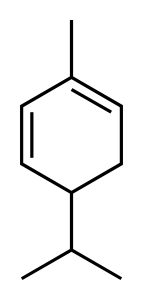
Borneol
Over 500 years ago, Asian cultures pioneered the use of different terpenes in their holistic treatments. One of these terpenes is Borneol, an amazing bicyclic monoterpene considered a staple of Asian traditional medicine due to its array of therapeutic effects. Borneol was initially derived from Borneo Camphor’s trunk, but it can be synthetically created today through turpentine oil or camphor. You can also find it in nature in many plant species, like rosemary, mint, and camphor.
Aroma: Borneol is known for emitting a calming minty herbal, spicy wood, camphor-like aroma with earthy undertones. It has a bitter flavor with a slight burning taste.
Effects: Borneol facilitates digestion, improves cardiovascular health, treats bronchial symptoms, helps the body heal wounds, and acts as an effective anti-inflammatory and pain reliever. For this reason, it has been used through the years as a topical pain reliever, perfect for rheumatic diseases. Moreover, it acts as a potent anticoagulant and anti-fibrosis agent. Borneol has shown antioxidative and antiviral properties that might inhibit the herpes simplex virus type 1. It also inhibits the growth and development of fungi while stimulating the immune system.
Boiling Point: 213°C
CAS Number: 507-70-0
Cannabis Strains: Do you love woody cannabis strains? Check Amnesia Haze, Golden Haze, and K13 Haze. These varieties are packed with higher concentrations of Borneol and Camphor.
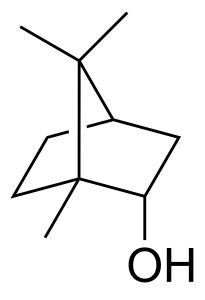
Isoborneol
Isoborneol is the exo-isomer of borneol. Put simply, these compounds are the same, but with a slight difference in their atomic arrangements and properties. Besides cannabis, Isoborneol is also found in citrus peel oils, nutmeg, ginger, and thyme. It is commonly used as a flavoring agent to bake a carrot cake, gingerbread cookie, or other spicy sweet desserts and as an additive to foods and beverages, such as orange and grape soda.
Aroma: Sweet woody aroma with fruity and spicy under-notes.
Effects: This terpene has antioxidant, anti-inflammatory, analgesic, antimicrobial, antitumor, and neuroprotective properties. Like Borneol, it has a notable antiviral agent that inhibits the herpes simplex type 1 virus. Moreover, it has anticoagulant effects that could be beneficial for cardiovascular patients. A study on mice suggests that Isoborneol may also help with sleep due to its sedative effects when inhaled.
Boiling Points: 212-214°C.
CAS Number: 124-76-5
Cannabis Strains: Currently, there’s no information available on Isoborneol strains on the cannabis market.
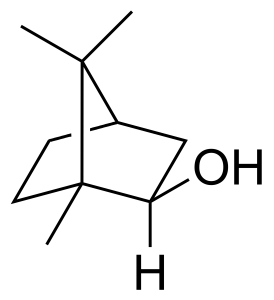
Valencene
Picture yourself in a large field full of Valencia orange trees. Take a deep breath and hold it. The bright and sweet citrusy aroma that you capture is thanks to Valencene.
Aroma: Sweet, citrusy aroma and flavour with notes of fresh herbs or freshly cut wood.
Effects: It is known that Valencene has an outstanding ability to reduce inflammation, fight skin cancer, and potentially improve atopic dermatitis and itching behaviour. It has anti- allergic effects and acts as a bronchodilator. It’s an excellent mood enhancer with energising and uplifting effects.
Boiling Point: 123°C.
CAS Number: 4630-07-3
Cannabis Strains: You can find Valencene in orangey cannabis varieties like Tangie and Agent Orange. Other popular high-valencene strains are Race Fuel, Alpha Blue (Dream Diesel, DD), Dark Blue Dream, Cetrix, Lucky Charms, Alien Dawg, XJ-13, Green Ribbon, and Black Jack.
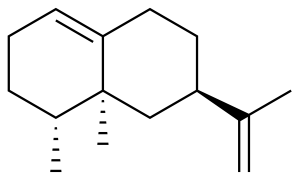
Fenchol
Even though Fenchol is not found in as many varieties of cannabis as are primary terpenes like pinene, its qualities complement other terpene’s effects and enrich the dominant aroma with enticing nuances. You can find Fenchol naturally occurring as a secondary terpene in plants and flowers with a piney-like fragrance, like basil, aster, and cannabis. Moreover, Fenchol is widely used in the perfume industry for its uplifting and refreshing scent.
Aroma: You can recognise fenchol by its woody, citrus scent, framed by refreshing pine hints, aromatic camphor notes, and subtle earthy nuances.
Effects: This monoterpene contains antioxidants that help boost your immune system and fight illnesses from common colds to cancer. Besides, Fenchol’s great uplifting energy and analgesic effects will get you moving. Other medicinal properties include a broad antimicrobial and antibacterial potential.
Boiling Point: 201°C
CAS Number: 1632-73-1
Cannabis Strains: There are few strains in which Fenchol is present at an average percentage, such as Banana Kush, OG Kush, and the skunky Sunset Sherbet.

Bergamotene
Within the less common terpenes in cannabis, we have Bergamotene. It is named after the bergamot plant, the primary source of Bergamotene’s most common isomer, along with carrots and cumin. One word isn’t enough to describe this sesquiterpene. Its complex aroma, different isomers, role as a pheromone for insects, and wide range of effects make Bergamotene incredibly fascinating.
Aroma: Bergamotene has a woody fragrance with a spicy edge that distinguishes it from other woody terpenes. In terms of flavor, it has a classic sweet-yet-tart citrus taste, with a unique floral touch.
Effects: Bergamotene’s aroma soothes the nerves, reduces tension, eases anxiety and depression. Besides this enlivening effect on mood, this sesquiterpene has anti- inflammatory, antiproliferative, and antioxidant properties.
Boiling Points: 259 to 260°C.
CAS Number: 17699-05-7
Cannabis Strains: To enjoy the peppery smell, the fresh taste, and the health benefits of Bergamotene, we recommend choosing among the uplifted mood of Lovelace, the creative boost from Lemon Haze, or the mellow relaxation from White Recluse.
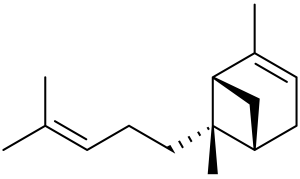
Alpha-Bisabolol
Bisabolol is the sweetest terpene on this ultimate list. When talking about bisabolol, we refer to a lesser-known cannabis monoterpene that adds valuable health benefits with a subtle, pleasing aroma touch. The best place to find this terpene is in products containing chamomile or chamomile essential oil.
Aroma: Subtle, sweet fruity-floral scent reminiscent of apples, honey, and chamomile, with citrus, tangy notes, and a peppery touch. Those with a keen nose may be able to detect nutty hints with herbal undertones and just a trace of coconut.
Effects: It has a range of potential benefits, including potent anti-inflammatory, anti- allergic, antimicrobial, and antioxidant properties with analgesic effects. It is the best cosmetics industry ally for being a great natural panthenol source and having anti-aging, anti-irritant, and skin-healing properties, which accelerate wound healing. All these features make this monoterpene an excellent moisturiser and soothing agent that protects and boosts the repair of the skin barrier while disinfecting and killing several microorganisms. It also exhibits gastroprotective, antispasmodic, drug permeation, vermifuge properties, and cancer cell anti-proliferative features.
Boiling Point:153°C
CAS Number: 515-69-5
Cannabis Strains: Bisabolol is only present in trace amounts in most cannabis strains. However, it is most likely present in floral varieties like our Cherry Blossom, Lavender, Jasmine, Master Kush, and Cotton Candy Kush. Moreover, you can find Bisabolol in the terpene profile of strains like Sour Lifter,White CBG, Pink Kush, Headband, OG Shark, and ACDC.
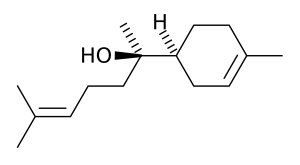
Eucalyptol
If you’re familiar with the fresh aroma that eucalyptus trees emanate and the health benefits that these have, then you perfectly know what eucalyptol is. Also known as cineole, it is one of the most frequently investigated monoterpenes for its health benefits. You can find considerable amounts of eucalyptol in rosemary, tea tree, camphor laurel, bay leaves, cardamom, and, of course, cannabis.
Aroma: Eucalyptol has a fresh, strong, soothing, minty fragrance with a spicy yet cooling taste.
Effects: This terpene has potent analgesic, anti-inflammatory, antioxidant, antibacterial, anti-fungal, and insect-repelling properties. Scientists also suspect that eucalyptol may help to treat asthma and lower blood pressure. Other associated properties include memory retention, promising cognitive learning improvement, and uplifting effects that might be helpful in Alzheimer’s treatment.
Boiling Points: 172°C
CAS Number: 470-82-6
Cannabis Strains: There are not a lot of specimens with high levels of eucalyptol, but there are a handful of examples with considerable amounts of this great terpene. Super Silver Haze, Headband, Bubba Kush, and Girl Scout Cookies are good examples that you can try.
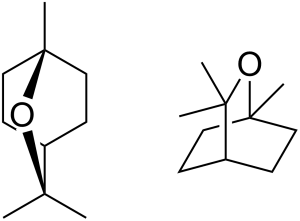
Geraniol
A monoterpenoid with a hard-to- forget aroma and flavour. Bees produce it through their olfactory glands to mark the flowers that contain nectar and locate the entrances to their hives. Besides cannabis, geraniol exists in lemons, geranium, and tobacco. It is also the primary component of rose oil, palmarosa oil, and citronella oil. Due to its rose-like scent, it’s usually used in aromatic bath products, perfumes, and body lotions.
Aroma: Geraniol will seduce you with its rose grass notes, peaches, and plums.
Effects: Geraniol is more than just an enticing scent. Studies have shown Geraniol‘s great potential as a neuroprotectant agent with anti-inflammatory, antioxidant, and antidepressant effects.
Boiling Points: 230°C
CAS Number: 106-24-1
Cannabis Strains: It’s present in strains like Amnesia Haze, Great White Shark, Afghani, Headband, Island Sweet Skunk, OG Shark, and Master Kush.

Farnesene
This sesquiterpene is popularly known as the compound responsible for generating the characteristic smell of green apple skin. Still, it is also found in ginger, grapes, pears, potatoes, quince, basil, and hops.
Aroma: Farnesene has a sweet, warm, woody fragrance, framed by fresh green vegetative notes similar to celery and hay with mild herbaceous nuances. This terpene gives plants a tart flavour with somewhat fatty and tropical fruity aftertastes.
Effects: This curious terpene acts as an excellent sedative and muscle relaxant, with calming effects. It also has antibacterial, anti-inflammatory, antifungal, and antispasmodic properties. Furthermore, recent studies have shown that farnesene has neuroprotective properties and may help prevent certain types of cancer.
Boiling Points: 124–125 °C
CAS Number: 502-61-4
Cannabis Strains: The fascinating farnesene is present in modest amounts in strains like Dutch Treat Haze, Cherry Punch, and White Rhino.

Ocimene
More than a fragrant terpene, Ocimene is a powerful antimicrobial agent. Plants with comprehensive defence systems show a high concentration of a-Ocimene. Besides cannabis, it’s also found in bergamot, allspice, basil, mangoes, orchids, mint, and kumquats.
Aroma: This unique terpene is responsible for sweet, herbaceous, and woodsy aromas with tropical undertones. Both alpha and beta isomers have the same fragrance and taste.
Effects: It is an immune system supporter thanks to its antiviral, antibacterial, anti-fungal, decongestant, and potent antiseptic effects. This sweet herbal terpene will provide you with uplifting energy while stimulating your brain and boosting your creativity and motivation.
Boiling Points: Ocimene has a shallow boiling point, being around 66°C.
CAS Number: 13877-91-3
Cannabis Strains: Pinene and myrcene are great pals of Ocimene. Together, they display the best of its effects. If you have tried White Fire OG, Sour Diesel, Clementine, Amnesia, Dutch Treat, Dream Queen, J1, Golden Pineapple, Purple Haze, or Jack Herer before, then you might have tried Ocimene without even knowing.

Nerolidol
This sesquiterpene is also found in oranges, ginger, tea tree, lady of the night orchids, and cannabis.
Aroma: Nerolidol has a spicy, woody aroma with a fruity, citrus, floral background that reminds of a mixture of rose, citrus, and apples.
Effects: This sesquiterpene has anti-parasitic, anti-fungal, antibacterial, soothing, and anti- anxiety effects. It enhances skin penetration, facilitating a more effective topical absorption. These features and their antioxidant, anticancer, anti-inflammatory properties, and fragrant scent make nerolidol helpful in skin products.
Boiling Points: 122°C
CAS Number: 7212-44-4
Cannabis Strains: Strains like Bubba Kush, Island Sweet Skunk, Jack Herer, Black Lime Reserve, Blue Dream, Chemdawg, and Skywalker OG are rich in nerolidol.

Guaiol
Like pinene and terpinolene, guaiol has a fresh pine fragrance. This sesquiterpenoid alcohol it’s also found in Xylopia aethiopica, pine, and cypress trees. In cannabis, Indica strains typically contain more guaiol than Sativas.
Aroma: Woody, fresh, mint, piney-like aroma reminiscent of evergreen trees.
Effects: Besides boosting cannabis’ healing and therapeutic effects, guaiol is associated with anti-inflammatory and analgesic effects, antimicrobial, anti-fungal, anti-parasitic, and antibacterial properties. Many have traditionally used guaiol as a treatment of bronchitis, asthma, stomachaches, and dysenteric conditions.
Boiling Points: 288°C
CAS Number: 489-86-1
Cannabis Strains: Our garden grows two different strains high in guaiol: Bubba Kush and White CBG. Other guaiol-rich strains are Chocolope, Blue Kush, ACDC, Cinex, Plushberry, Pennywise, Fruit Loops, Jillybean, Golden Pineapple, and Chernobyl.

Delta-3 Carene
This bicyclic monoterpene is responsible for the intense, sweet, and citrusy aroma of cypress trees, which have substantial amounts of it, followed by other plants like rosemary, basil, bell peppers, cedar, turpentine, and pine.
Aroma: Sweet piney aroma with lemon nuances and musk, earthy undertones.
Effects: When it comes to the medical side of carene, it seems to be most beneficial in healing broken bones. It’s widely considered a natural antihistamine, analgesic, and helpful anti-inflammatory agent in diseases like fibromyalgia, arthritis, and osteoporosis. On the other hand, Carene possibly promotes memory retention, stimulates mental sharpness, focus, and concentration, which can be helpful for patients with Alzheimer’s disease.
Boiling Points: 170–172°C
CAS Number: 13466-78-9
Cannabis Strains: This terpene is found most commonly in Indica strains of cannabis, including AK-47, Arjan’s Ultra Haze, Jack Herer, OG Kush, Skunk #1, Super Silver Haze, and Super Lemon Haze, among others.
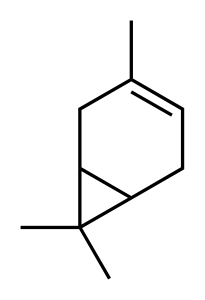
Phytol
Delicate and dainty with tiny flowers, jasmine is known worldwide for its unique tropical smell and pretty blossoms that attract bees. But only a few know that this charming, sweet floral fragrance it’s provided by the unpopular terpene called phytol.
Aroma: Floral upfront with balsamic undertones.
Effects: Scientists have studied Phytol for its analgesic and anti-inflammatory action. It acts as a sedative and anticonvulsant agent, reducing stress and anxiety while promoting healthy sleep patterns. It also has the potential as an antioxidant and antitumor agent.
Boiling Points: 204°C
CAS Number: 7541-49-3
Cannabis Strains: Enjoy phytol’s mellow floral and grassy taste with strains like Blue Genius, Sour Diesel, OG Cheese, I-95, and OG Kush.
![]()
Sabinene
Sabinene joins this complete list of terpenes and effects since it is responsible for the earthy oak aromas that wine and whiskey makers love. This bicyclic monoterpene occurs naturally in holm oak, Norwegian fir, nutmeg, among others.
Aroma: Woody, spicy, pepper with citrus nuances.
Effects: Sabinene shows peculiar positive effects on our bodies, like anti-inflammatory, antibacterial, anti-fungal properties. It aids digestion, relieves arthritis, and prevents muscle atrophy. It also soothes skin conditions and eases signs of aging due to its anti-oxidative effects. Some studies show that Sabinene is an anticancer agent that can effectively fight the proliferation of malignant tumours related to leukaemia.
Boiling Point: 163.6°C
CAS Number: 3387-41-5
Cannabis Strains: You can’t wait to try a spicy, citrusy, piney strain? Sabinene’s highly concentrated in haze strains like Super Silver Haze, Super Lemon Haze, or Red Haze. Other cannabis strains high in Sabinene are Harle-Tsu, aka Harlequin Tsunami, Meatbreath, Grand Master Kush, Mimosa, Chocolate Thai, Mendo Purps, and Wabanaki.
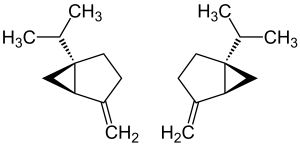
Menthol
Menthol is one of the most in-demand terpenes globally, with over 30,000 metric tons used every year. Although it can also be produced synthetically, this waxy, crystalline monoterpene occurs naturally in mint plants, including peppermint, spearmint, and cannabis. Yes, some cannabis varieties produce in their trichomes low menthol amounts to defend themselves from plagues and infections. Many scientists have studied this terpene for years for its multiple health benefits, especially for its ability to reduce coughing and its analgesic action.
Aroma: Fresh mint and spicy undertones characterise this terpene.
Effects: Among the most notable properties of this terpene, we find that menthol’s cooling and numbing properties can act as a potent analgesic, reducing acute pain and relaxing muscle tension. In addition, its anti-inflammatory effects can help to soothe away a wide range of painful conditions such as headaches and joint pain. Unlike cigarettes, which use menthol as an additive, cannabis plants produce this refreshing terpene, which has the ability to reduce coughing, relieve throat irritation, helps clearing out the sinuses and ease other respiratory diseases like asthma.
Boiling Points: 212-214°C
CAS Number: 2216-51-5
Cannabis Strains: You can find menthol in cannabis strains like ChemDog, Gelato 45, and Thor’s Hammer. Dozens of cannabis varieties contain menthol. Green Monster, Wonder Woman OG, Himalayan Gold, Cabbage Patch, and Space Needle are just a handful of menthol-rich strains on today’s cannabis market.
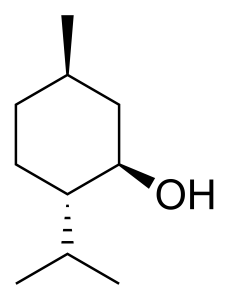
Terpinene
Terpinene or a-Terpinene is one of the main elements that give tea tree oil its medicinal properties. Its pleasant, fresh scent also makes it a frequent addition to natural cosmetics and skincare products. Also found in agave, coriander, Lebanese oregano, celery, lemon, grapes, cumin, ginger, pepper, allspice, and cinnamon.
Aroma: Earthy aroma
Alpha: Lemony-citrus, refreshing, herbal, woody, sweet
Gamma: Citrus, refreshing, herbal, woody, sweet
Effects: Terpinene possesses antimicrobial, anti-fungal, antioxidant, anti-inflammatory, and anti-proliferative properties and may exhibit antitumor effects. It’s widely known for reducing indigestion, bloating, fatigue, abdominal pain, flatulence, diarrhoea, and colic, along with respiratory distress and loss of appetite.
Boiling Point: 183°C
CAS Number: a-Terpinene 99-86-5
Cannabis Strains: Sentinel and Warwick #1 are two cannabis varieties that contain high concentrations of terpinene.

P-Cymene
Cymene, aka p-cymene, also known as p-cymol or p-isopropyltoluene is the monoterpene responsible for the scent of carrots. Oranges, tangerines, cumin, thyme, and oregano also contain high levels of cymene.
Aroma: Musty-tang with particular carrot-like notes with a sweet, slightly citrus orangey background. Some describe a harsh chemical odor with subtle oxidized citrus lemon notes and woody hints.
Effects: Laboratory research has concluded that cymene has anti-inflammatory, antinociceptive, and pain-relieving properties. When applied topically, it is easily absorbed to reduce the pain and inflammation of wounds without the side effects that some drugs or painkillers can generate. Cymene can also improve mood, reduce blood pressure, improve retention and memory, and ease Alzheimer’s disease and ADHD symptoms.
Boiling Point: 177°C
CAS Number: 99-87-6
Cannabis Strains: Bakerstreet, Moon, Mango Haze, and Lemon skunk.
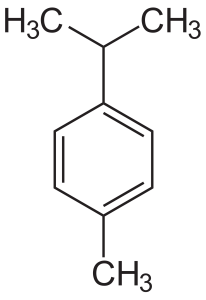
References
1. Cox-Georgian, D., et al. (2019). Therapeutic and Medicinal Uses of Terpenes. Medicinal Plants: From Farm to Pharmacy [online]. Available from: https://www.ncbi.nlm.nih.gov/pmc/articles/PMC7120914/[accessed 9th of Feb 2022]
2. Russo, E. (2011). Taming THC: potential cannabis synergy and phytocannabinoid-terpenoid entourage effects. British Journal of Pharmacology [online]. Available from: https://www.ncbi.nlm.nih.gov/pmc/articles/PMC3165946/ [accessed 9th of Feb 2022].
3. LaVigne, J., et al. (2021). Cannabis sativa terpenes are cannabimetric and selectively enhance cannabinoid activity. Scientific Reports [online]. Available from: https://www.nature.com/articles/s41598-021-87740-8 [accessed 9th of Feb 2022].
4. Piomelli, D., Russo, E. (2016). The Cannabis sativa Versus Cannabis indica Debate: An Interview with Ethan Russo, MD. Cannabis and Cannabinoid Research [online]. Available from: https://www.ncbi.nlm.nih.gov/pmc/articles/PMC5576603/ [accessed 9th of Feb 2022].
5. Surendaran, S., et al. (2021). Myrcene – What Are the Potential Health Benefits of This Flavouring and Aroma Agent? Frontiers in Nutrition [online]. Available from: https://www.ncbi.nlm.nih.gov/pmc/articles/PMC8326332/[accessed 9th of Feb 2022].
6. Sharma, C., et al. (2016). Polypharmacological Properties and Therapeutic Potential of β-Caryophyllene: A Dietary Phytocannabinoid of Pharmaceutical Promise. Current Pharmaceutical Design[online]. Available from:https://pubmed.ncbi.nlm.nih.gov/26965491/ [accessed 19th of Feb 2022].
7. Anandakumar, P., Kamaraj, P., Vanitha, MK. (2020). D-limonene: A multifunctional compound with potent therapeutic effects. Journal of Food Biochemistry [online]. Available from: https://pubmed.ncbi.nlm.nih.gov/33289132/ [accessed 19th of Feb 2022].
8. Salehi, B., et al. (2019). Therapeutic Potential of α- and β-Pinene: A Miracle Gift of Nature. Biomolecules [online]. Available from: https://www.ncbi.nlm.nih.gov/pmc/articles/PMC6920849/[accessed 19th of Feb 2022].
9. Mendes de Lacerda, G., et al. (2021). Pharmacological and toxicological activities of α-humulene and its isomers: A systematic review. Trends in Food Science & Technology [online]. Available from: https://www.sciencedirect.com/science/article/abs/pii/S0924224421004234 [accessed 19th of Feb 2022].
10. Aprotosoaie, AC., et al. (2014). Linalool: a review on a key odorant molecule with valuable biological properties. Available from: https://onlinelibrary.wiley.com/doi/10.1002/ffj.3197 [accessed 19th of Feb 2022].

